A multicolored line based on this example can be used. The idea is to split the line into sequences and then plot the lines using a LineCollection. Each line of the collection can have is own color.
As the random walker uses a few segments more than once, some of the segments have to be shifted a bit.
import matplotlib.pyplot as plt
x = y = 0.
x_values = [0.]
y_values = [0.]
colors = []
dna_seq = ('GGACTTCCCTATGGTGCTAACAAAGAGGCAGACAAA')#
color_lookup = {'A': 'red',
'T':'green',
'G': 'blue',
'C': 'orange'}
for base in dna_seq:
if base == 'T':
y += 1
elif base == 'A':
y -= 1
elif base == 'G':
x += 1
elif base == 'C':
x -= 1
x_values.append(x)
y_values.append(y)
colors.append(color_lookup[base])
import numpy as np
from matplotlib.collections import LineCollection
points = np.array([x_values, y_values]).T.reshape(-1, 1, 2)
segments = np.concatenate([points[:-1], points[1:]], axis=1)
#handle collisions (algorithm could probably be improved :-) )
delta = 0.1
changed=True
while changed:
changed=False
for idx, segment in enumerate(segments):
if idx > 0:
cur_seg = segment.tolist()
if cur_seg in segments[:idx-1].tolist() or [cur_seg[1], cur_seg[0]] in segments[:idx].tolist():
if(cur_seg[0][0] == cur_seg[1][0]):
segment[0][0] += delta
segment[1][0] += delta
else:
segment[0][1] += delta
segment[1][1] += delta
changed=True
fig, ax = plt.subplots()
lc = LineCollection(segments, colors=colors)
lc.set_linewidth(2)
ax.add_collection(lc)
ax.set_aspect('equal')
ax.set_xlim(min(x_values)-.1, max(x_values)+.1)
ax.set_ylim(min(y_values)-.1, max(y_values)+.1)
plt.show()


